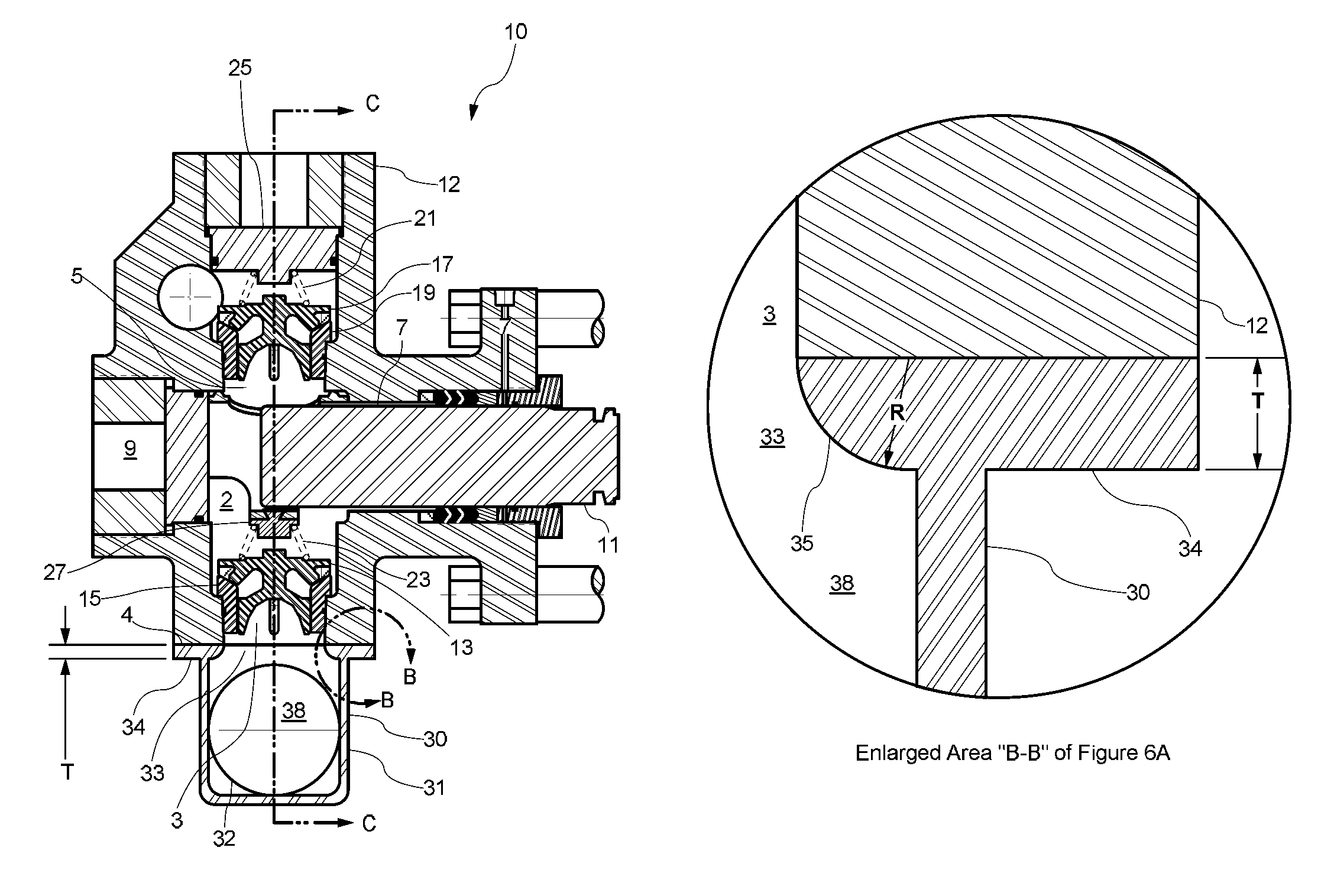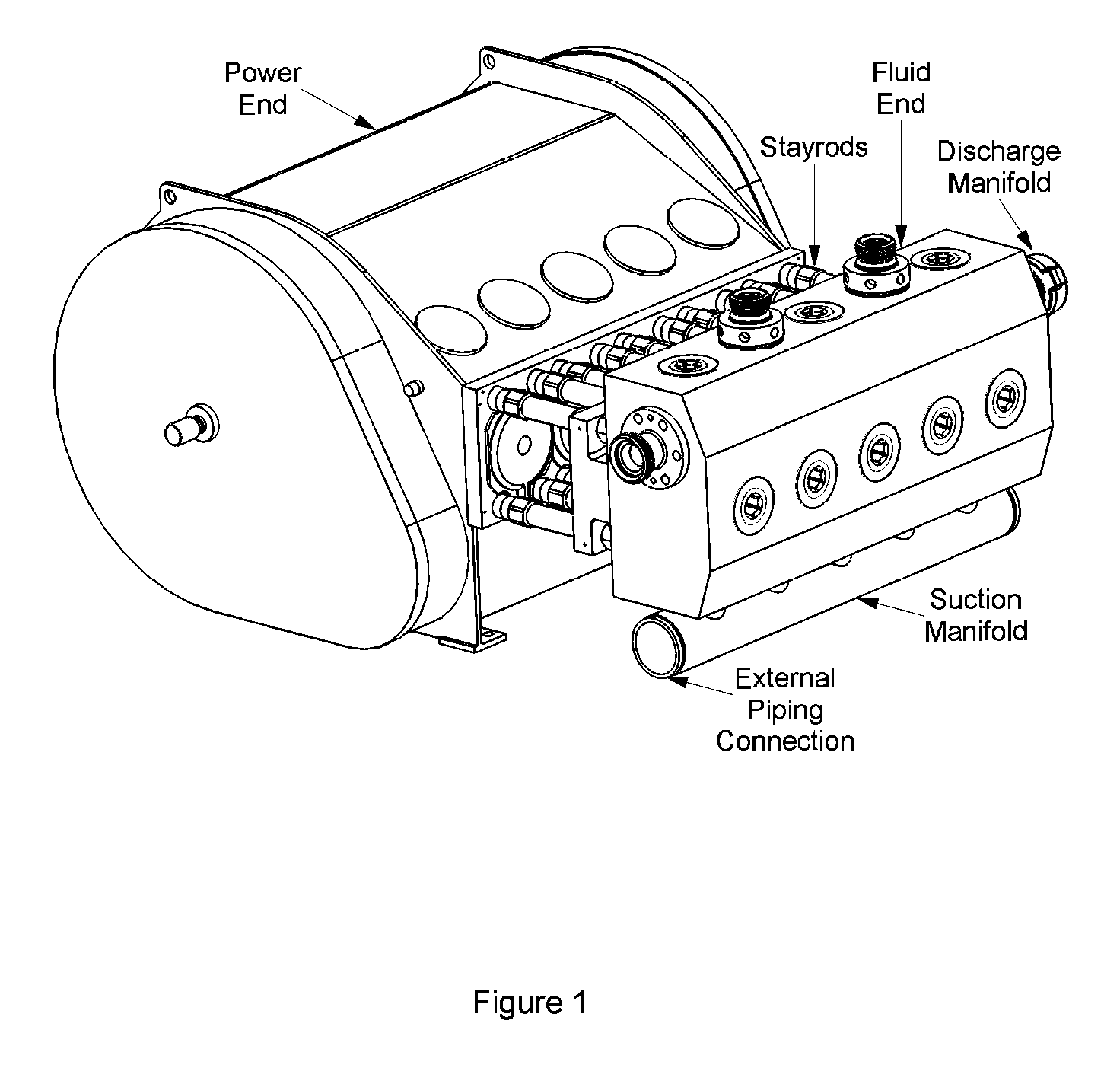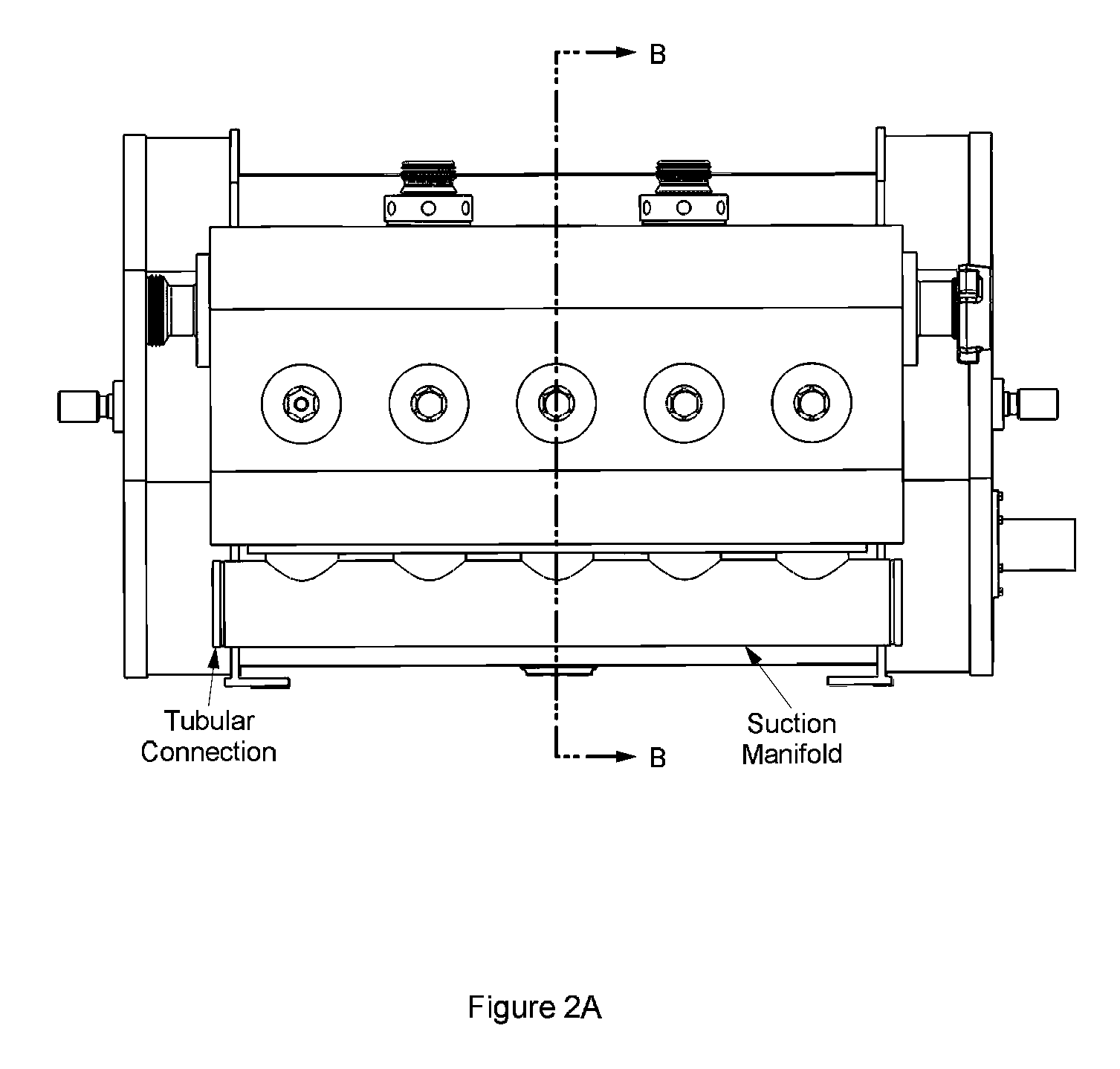Integrated design fluid end suction manifold
a technology of integrated design and fluid end, which is applied in the direction of positive displacement liquid engines, piston pumps, liquid fuel engines, etc., can solve the problems of low value required for pump, devastating damage to suction piping, and low positive suction head availabl
- Summary
- Abstract
- Description
- Claims
- Application Information
AI Technical Summary
Benefits of technology
Problems solved by technology
Method used
Image
Examples
Embodiment Construction
[0034]FIG. 6A schematically illustrates a cross-sectional view through one cylinder of a typical high-pressure pump and suction manifold of the present invention. The cross-section illustrated of pump fluid section 10 is perpendicular to the axes of the suction valve bore 3, discharge bore 5, access bore 9, and plunger bore 7. FIG. 6A illustrates a plunger pump fluid section 10 made using a housing 12, and having suction valve bore 3, discharge bore 5, access bore 9 suction valve 13, seat 15, discharge valve 17, seat 19, plunger 11 present in a plunger bore 7, inner volume 2, suction valve spring 23, suction valve spring retainer 27, discharge valve spring 21, discharge cover and spring retainer 25 according to some embodiments of the disclosure. In FIG. 6A the springs and retainers function to provide a mechanical bias to the suction valve and discharge valve, towards a closed position. FIG. 6A illustrates a suction manifold 30 of the present invention, comprising exterior walls 31...
PUM
 Login to View More
Login to View More Abstract
Description
Claims
Application Information
 Login to View More
Login to View More - R&D
- Intellectual Property
- Life Sciences
- Materials
- Tech Scout
- Unparalleled Data Quality
- Higher Quality Content
- 60% Fewer Hallucinations
Browse by: Latest US Patents, China's latest patents, Technical Efficacy Thesaurus, Application Domain, Technology Topic, Popular Technical Reports.
© 2025 PatSnap. All rights reserved.Legal|Privacy policy|Modern Slavery Act Transparency Statement|Sitemap|About US| Contact US: help@patsnap.com



